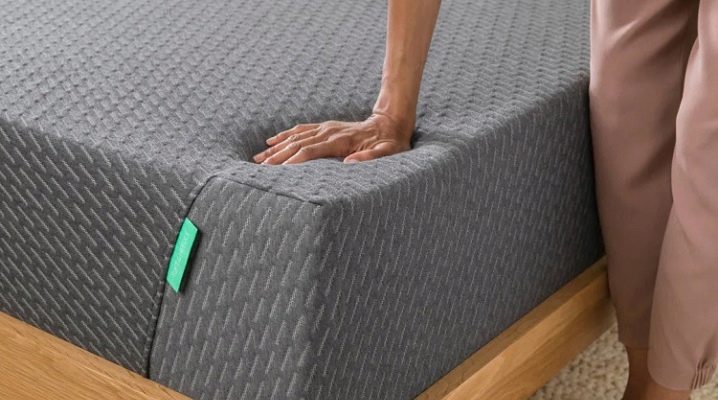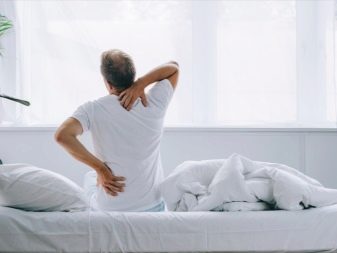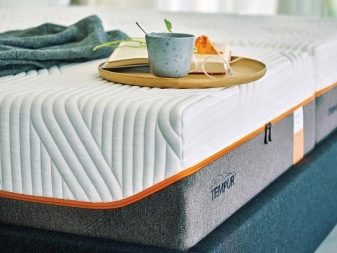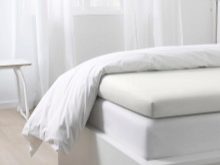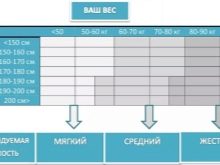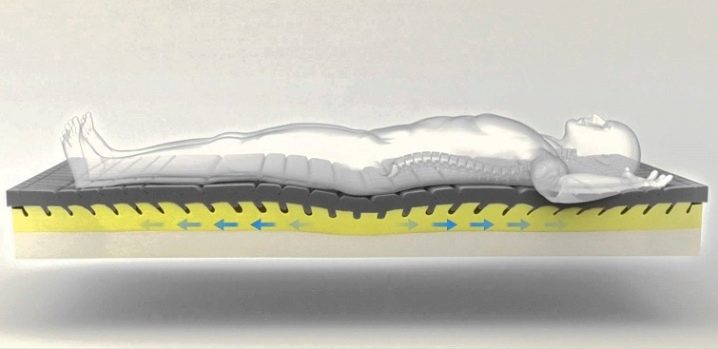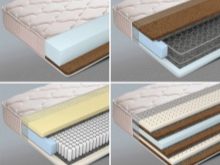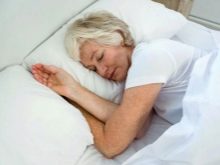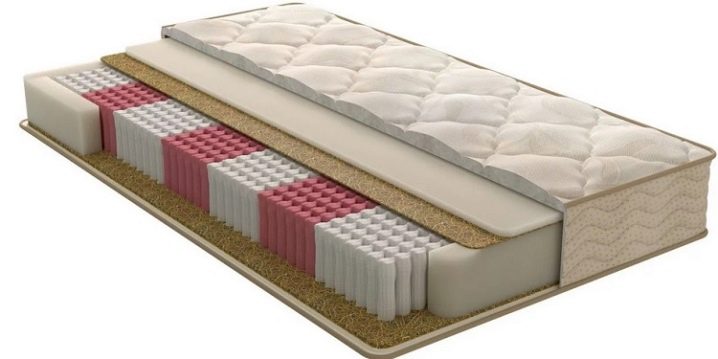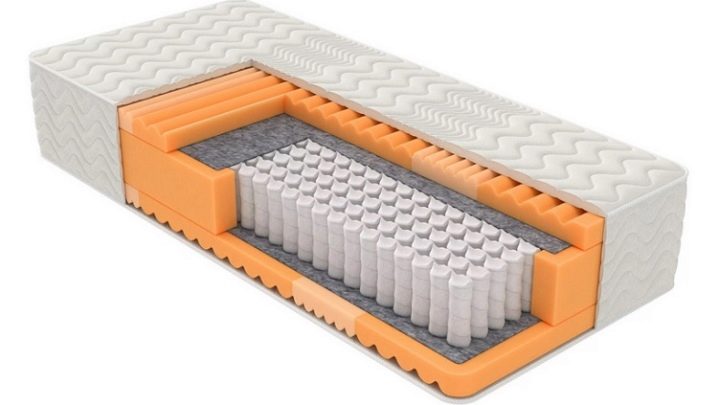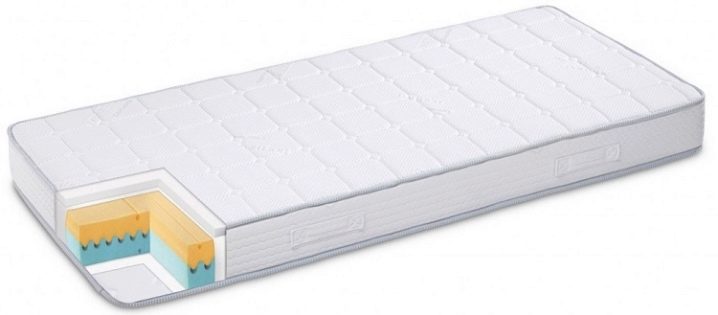Choosing orthopedic mattresses for the elderly
In old age, the muscles and joints are no longer so mobile, various diseases of the vessels and the musculoskeletal system appear. A hard bed no longer contributes to relaxation and good rest, which means it's time to replace the mattress.
Suitable species
There is no separate line of orthopedic mattresses for the elderly. Therefore, when buying, you should focus on well-being, physical fitness and medical indications. Recommended among springless mattresses latex and memory foam bodies from memoriform.
Latex are moderately soft with separate zones of stiffness. They are environmentally friendly, antibacterial, but contraindicated for asthmatics and allergy sufferers. In addition, the filler perfectly absorbs moisture and gives it away poorly. This is a significant disadvantage if an elderly person suffers from enuresis. In this case, the cover must be water-repellent.
Memoriform - viscous and highly elastic modern foam rubber... This material reacts to body weight and its temperature, as if enveloping, adjusting to the shape of the body. Therefore, a high anatomical effect is achieved, there is no pressure on joints, vessels and soft tissues. But you need to get used to the unusual tactile sensations. In addition, the memoriform mattress does not allow air to pass through well, sometimes there is a specific chemical smell.
If an elderly person has weak muscles, it will be difficult to roll over on a mattress that is too thick.
You can consider foam mattresses made of polyurethane foam, among which there are soft models. But they may not provide the necessary support to the spine and quickly fail. Moderately harsh can seem too harsh. Polyurethane foam is elastic, but it adapts less well to the curves of the body.
If we consider spring mattresses, then these should be models with independent blocks. Only they can provide the necessary point support, without the effect of a "hammock" and a squeak, which is the fault of products with an all-spring Bonnel-type block. In addition, spring mattresses are more durable and more familiar to an elderly person. The stiffness model is best selected individually, starting with testing moderately soft.
You can consider mattresses with two sides of hardness: moderately soft and medium hard. It can be turned over depending on the need. For example, use the soft side for everyday sleep, and turn it over only during an exacerbation of chronic back pain. For bedridden patients, special anti-decubitus mattresses are produced. Distinguish between static and dynamic models.
Static mattresses are recommended for elderly people with limited mobility, that is, they can sit down and turn over on their own. The models have a weak massage effect, but they are anatomical and evenly distribute the weight over the surface, due to which the anti-decubitus effect is achieved.
Dynamic models have an electric compressor that blows air into the cells of the mattress. There is a movement of the surface of the bed, thereby providing a forced massage. When choosing, it is important to take into account the weight of a person:
- up to 100 kg - cellular structure;
- over 100 kg - balloon option.
If pressure sores are already a pressing problem, then only the balloon model.
How much stiffness is needed?
For the elderly, soft mattresses are recommended, as they are comfortable and do not provide any resistance to the body. Hard mattresses are often prescribed for back problems.But people with age-related changes in the body have different needs and physical capabilities.
A mattress that is too firm can only worsen back and joint pain. It does not allow the muscles to fully relax, there is pressure on the area of the shoulders and pelvis, increases their numbness, especially when sleeping on the side. Therefore, a moderately soft mattress is recommended for people aged for a bed.
Softness refers to the anatomical nature of the mattress, its ability to adapt to the curves of the body, while effectively supporting the spine. If an elderly person is in good physical shape, does not have problems with the musculoskeletal system, and there are no vascular diseases, then you can stop at mattresses of medium hardness.
Overweight people, after surgery or with diseases of the spine and joints, need medical advice. In this case, the mattress is selected individually, based on the doctor's recommendations.
Manufacturers
Unfortunately, the mark "orthopedic" does not always correspond to reality. More often than not, this is nothing more than a marketing gimmick. To buy a good quality mattress that matches the declared description, you should pay attention to a manufacturer with a good reputation.
- For example, this is a large Russian manufacturer of mattresses "Ascona"occupying a third of the domestic market and actively supplying its products abroad. Models with various fillings are available, all-stitched from economy to premium class. A characteristic feature is that they use hourglass springs, which improve the orthopedic properties of innerspring mattresses.
- "Ormatek" Is the second leading Russian manufacturer of mattresses that has been on the market for over 20 years. All products are of guaranteed quality, durability and wear resistance. A wide range of fillers, including horsehair. The brand uses the patented TITAN spring blocks. They are made of reinforced wire and are designed for increased loads.
- Excellent mattresses are offered by the Belarusian brand Vegas, popular in the CIS. She is the undisputed leader in Belarus, but the quality was appreciated even in Europe. It mainly specializes in the production of orthopedic mattresses based on independent spring units. Latex, polyurethane foam, memoriform, coconut coir are used as a filler.
- If you choose a springless mattress, then you can pay attention to the Italian brand Dormeo... It also makes orthopedic toppers - special mattress toppers that adjust the bed base. And if you also buy an anatomical pillow from this manufacturer, then sleep will be even more comfortable. The only drawback is that you will have to order the mattress directly from the manufacturer, but the product is guaranteed.
How to choose?
An orthopedic mattress must be firm to support the spine. At the same time, for the elderly, moderately soft or medium-hard models are recommended. This will reduce pain in muscles and joints, and improve the quality of sleep. The most popular mattress size is 120x190 cm, it is spacious enough for one person. You can be guided by the rule: the length of the mattress should be 15-20 cm longer than the height of the sleeping person. The width should be sufficient to place your hands freely behind your head or on your waist. The elbows should not hang down.
You can focus on the weight of a person. If it is up to 100 kg, latex filler, polyurethane foam, memoriformes are perfect. Over 100 kg - only spring mattresses. Only independent spring blocks can provide point support for the spine. They can withstand a heavy body, do not sag. Memoriform gives the same effect, but there is an individual dislike for excessive enveloping. But he does not go in waves when one of the spouses turns in bed. Ideal for light sleep.
When choosing a mattress for a person with a sore back, it is imperative to take into account the existing diseases.A soft sleeping place is not always allowed.
For example:
- radiculitis - memoriformes or independent spring blocks, as a point load distribution is required, medium-hard;
- osteochondrosis - mattress with two sides of latex stiffness or independent spring blocks;
- sciatica - medium-hard, latex or memoriform;
- scoliosis - medium-hard, combined models of latex and coconut coir;
- osteoarthritis - hard and medium-hard, anatomical polyurethane foam with body memory effect.
With an intervertebral hernia, it is categorically impossible to use a soft base. A double-sided model with variable stiffness is best.
The damaged area of the spine also matters:
- cervical spine and pelvis - rigid base;
- chest - medium hard;
- lumbar - moderately soft.
It is recommended to test mattresses correctly in the evening, when fatigue builds up and pains appear. In the morning, you can make a mistake, because a rested back may not bother you. It is important to listen to the sensations of the body. If pressure points are felt on the mattress, then it is hard. If the shoulders and hips fall, it's too soft. Do not be limited to the choice that one store provides, it is better to spend time looking, because the mattress is purchased for a long time. Sometimes you can exchange a model for another if it does not fit. You should know about this option in advance, not all companies provide it.
